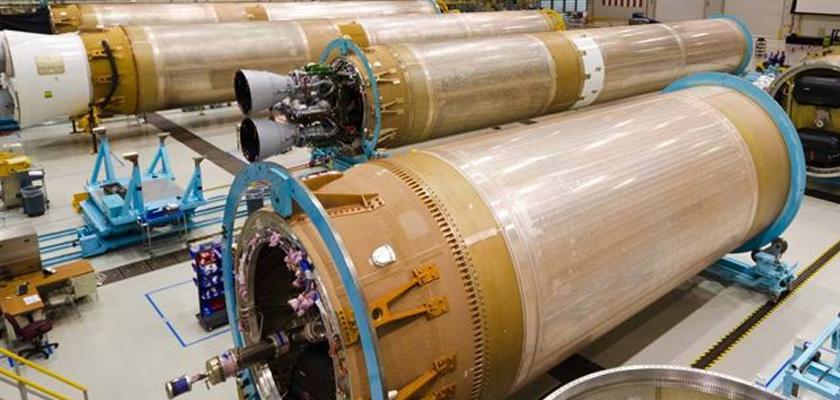With Russian leader Vladimir Putin warning the world that his country is armed with thermonuclear weapons, fears about the Russian invasion of Ukraine spinning out of control and setting off World War III are on the rise. Russian cyberattacks were answered with Ukraine cyberattacks, but now fears are spreading that Putin will take part in revenge cyberattacks on an international level.
North Alabama’s substantial NASA and military aerospace, military, and high-tech company assets appear to be enticing targets for potential enemy cyberattacks. Such attacks could be aimed at either stealing technology secrets or shutting down operations for specific targets in one of America’s most important space and defense sector regions.
Sean Potter, the official spokesman for NASA headquarters in Washington, D.C., told 1819 News that, “NASA takes cybersecurity threats very seriously, and has a robust set of countermeasures in place … The agency monitors its networks 24/7 for cyber threats using both automated tools and defenses, as well as a dedicated staff of cybersecurity professionals.”
Cybersecurity expert Jay Town, Vice-President and General Counsel of Huntsville’s Gray Analytics, reported that “There have been warnings since 2020 about the cyber intrusions and the regular targeting of U.S. defense contractors by Russian state-sponsored cyber actors.”
Town said those warnings were issued by federal security agencies such as the National Security Agency and the FBI and that Huntsville is regarded as one of the top five American targets for cyber espionage actors, at least as far as the defense contractors in the Rocket City are concerned.
Town said that the happenings in Ukraine have only “heightened the awareness of the threats” posed by foreign cyber threats. He said the bad actors attempt to find their way into sensitive military and military contractor networks the same way they try to break into our personal computers, devices, and business networks via so-called “click events” (where a user inside of a network clicks on a deceptive email link or attachment sent to them, or), “just exploiting a vulnerable employee, who during their lunch hour will click around the internet, on Twitter, or on Facebook.”
A quick overview of the major space and defense assets in the Huntsville-Decatur area reveals why those facilities present an enticing target to foreign rivals. There are four major defense, space, and advanced research installations or campuses located in and around Huntsville.
NASA’s Marshall Spaceflight Center
While NASA’s Marshall Spaceflight Center is classified as a civilian installation, much of the space system’s hardware research and development work conducted at Marshall falls under the protective legal shroud of United States International Traffic in Arms Regulations (ITAR), a law designed to regulate the manufacture, sale, and distribution of defense and space-related articles and services as defined in the United States Munitions List (USML). The intention of ITAR is to prevent potentially hostile foreign entities from obtaining devices and systems that could be used to attack and inflict harm and damage to the United States and its people.
Cummings Research Park
Huntsville is also the home of the nation’s second-largest research park, the Cummings Research Park, where more than 26,000 employees work for more than 300 innovative companies that conduct world-class research and development. Lockheed Martin, Aerojet Rocketdyne, Blue Origin, General Dynamics, and IBM are just a few of the more recognizable high-tech companies that reside in the park. Cummings is also home to a Tier-1 research university, the University of Alabama at Huntsville (UAH), where more than 13,000 students study. One of the more fascinating U.S. Army Space and Missile Defense Command projects conducted at UAH in recent years was research into the development of Directed Energy (DE) weapons, which are basically the ray-gun weapons that could potentially shoot down enemy missiles, aircraft, and even disable tanks at the speed of light, as envisioned in thousands of science fiction tales. The metal melting power of a high-energy laser DE weapon was previously demonstrated at UAH during a study paid for by a $47 million, five-year Advanced Technology, Test and Development contract that the Space and Missile Defense Command awarded the university.
Redstone Arsenal
Redstone Arsenal is the large Huntsville military garrison that geographically envelops the Marshall Spaceflight Center, and other large and sensitive federal installations. Redstone is home to the Army Aviation and Missile Command, the Defense Department’s Missile Defense Agency, and is home to Defense Intelligence Agency’s Missile and Space Intelligence Center; and Bureau of Alcohol, Tobacco, Firearms and Explosives installations. Approximately 36,000 to 40,000 personnel work within the confines of Redstone every day at present, but the number is going up significantly in 2026. The Federal Bureau of Investigation has been in residence at Redstone for many years and has more than 400 employees working there now, but the new FBI Redstone Innovation Center, which is presently under construction, will employ 3,400 or more experts to run the FBI’s technical hub and will become the center of the agency’s cyber threat intelligence analysis, data analytics, and training facility.
United Launch Alliance
A little further west down the Tennessee River, United Launch Alliance (ULA) manufactures, assembles, and integrates major components of some of America’s mightiest and most dependable rockets. ULA employs more than 800 employees at the 1.4-million square foot facility.
To connect with the author of this story, or to comment, email Jim.McDade@1819News.com.










